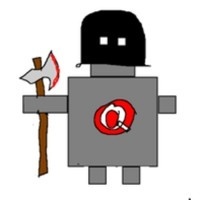I should be recusing myself from this question, because in fact I have added dozens of symbols to Unicode, both as an employee of the Thesaurus Linguae Graecae, and as a tapped on the shoulder expert.
When Asmus Freytag tapped me on the shoulder, though, and said to me “We want to finalise Greek: Suggest all the characters we will ever need, so we can close the book on it”—there’s one decision I made that skipped a character, and that I feel a little bad about.
Unicode Greek includes three archaic characters that I proposed to them:
- Heta, <Ͱ>, was one way of writing the version of eta that some Greek alphabets used for /h/ instead of /eː/. In fact, most scholars just write it as a Latin <h>, e.g. hιππόλυτος for Hippolytus (Ἱππόλυτος); but you will see the tack symbol used occasionally. (U+0371)
- The Tsan and Pamphylian Digamma were two different sounds in two different dialects of Greek, that had the same glyph, <ͷ> (U+0377).
- The Archaic Sampi, <ͳ>, was the use of sampi as a letter of the alphabet, corresponding to σσ—as distinct from the normal use of sampi <ϡ>, as the numeral 900. For example, τεͳαράϙοντα “forty” in Ephesus, corresponding to regular Ionic τεσσαράκοντα. (U+0373)
My compunction comes from what I did with the Pamphylian sampi. To quote Wikipedia:
A letter similar to Ionian sampi, but of unknown historical relation with it, existed in the highly deviant local dialect of Pamphylia in southern Asia Minor. It was shaped like
![]()
According to Brixhe it probably stood for the sounds /s/, /ss/, or /ps/. It is found in a few inscriptions in the cities of Aspendos and Perge as well as on local coins. For instance, an inscription from Perge dated to around 400 BC reads: ͶανάͲαι Πρειίαι Κλεμύτας Λϝαράμυ Ͷασιρϝο̄τας ἀνέθε̄κε (=”Vanassāi Preiiāi Klemutas Lwaramu Vasirwōtas anethēke”, “Klemutas the vasirwotas, son of Lwaramus, dedicated this to the Queen of Perge”). The same title “Queen of Perge”, the local title for the goddess Artemis, is found on coin legends: ͶανάͲας Πρειιας. As ͶανάͲα is known to be the local feminine form of the archaic Greek noun ἄναξ/ϝάναξ, i.e. (w)anax (“king”), it is believed that the ͳ letter stood for some type of sibilant reflecting Proto-Greek */ktj/.
I am, temperamentally, a lumper rather than a splitter. It was my decision that the Pamphylian letter was a variant of the archaic sampi, and should be treated as a glyph variant of that codepoint, rather than as an independent codepoint.
![]()
[math]huge{ͳ}[/math]
This means I have made life difficult for anyone working on Pamphylian. They will have to commission a different font, with the archaic sampi pointing the other way around. Or, rather more unlikely, commission a font with two variant glyphs for the archaic sampi, and use software that allows them to pick which variant to display. Or just shrug, and use the Ionian glyph instead of the Pamphylian glyph. (Like my Wikipedia cite does.)
Sorry guys.


